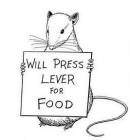Table of Contents
Behaviorism
About behaviorism
Behaviorism is a learning paradigm with its roots dating back to the second half of 19th century and works of Ivan Sechenov (1829 - 1905) and Vladimir Bekhterev (1857 - 1927), and gaining a significant attention in the first decades of the 20th century. The most central premise of behaviorism is that, in order to make psychology a real science, it must be orientated on what is observable and measurable. In words of one of the key behaviorists John Watson (1878 - 1958),
- “Psychology, as the behaviorist views it, is a purely objective, experimental branch of natural science which needs introspection as little as do the sciences of chemistry and physics. It is granted that the behavior of animals can be investigated without appeal to consciousness.”1)
Behaviorists saw the mind as a “black box” and did not attempt to analyze its inner processes like thoughts, feelings, or motivation. Instead, they saw learning as a visible change in one's behavior which, unlike mind processes, can be measured. From behaviorist perspective, a learner starts off as a clear state and simply responds to environmental stimuli. Those responses can be shaped through positive and negative reinforcement (usually a reward for desired and a punishment for undesired behavior), increasing or decreasing the probability of repeating the same behavior. Forming stimulus-response (S-R) associations which result in observable behavior is for behaviorism the most significant form of learning.
This learning paradigm can roughly be divided in two phases:
- behaviorism (1910 - 1930), and
- neobehaviorism (1930 - 1955).
Neobehaviorism outgrew classical behaviorism by attempts to formalize the laws of behavior (sometimes in forms of mathematical expressions) and beliefs that learning can also occur indirectly through observing. Neobehaviorists are sometimes considered a transitional group that shifted dominant learning perspective toward cognitivism.
Learning theories:
Among learning theories listed above, connectionism presents an introduction to behaviorist learning and setting its frames followed by true behaviorist learning perspectives of classical and operand conditioning. Sign learning appeared as first neobehaviorist theory, followed by drive reduction theory, which also incorporated idea of describing learning with intervening variables.
Basic ideas and approximate historical introduction time for each of this theories can be found in this chronological overview.
Instructional design theories and models
Criticisms
Behaviorism today mostly lost its influence and let cognitivism take its place as the dominant learning paradigm. Critics of behaviorist learning usually argue that behaviorism:
- does not explain all kinds o learning since it ignores inner mind activities,
- offers a very limited view on learning since it ignores internal factors such as emotions or motivation,
- ignores fact that learning depends on learner's inner subjective representation of environment and learning history.
Bibliography
Graham, George. Behaviorism. The Stanford Encyclopedia of Philosophy (Fall 2010 Edition). Preuzeto 26. veljače, 2011.
Weidman, Nadine. Behaviorism - Neobehaviorism (1930–1955). Science Encyclopedia. Preuzeto 22. lipnja, 2011.
George Boeree. Behaviorism. Preuzeto 23. lipnja, 2011.
Read more
Sechenov, Ivan Mikhaĭlovich. Reflexes of the brain. M.I.T. Press, 1965.
Vladimir Mikhaĭlovich Bekhterev, General principles of human reflexology. Ayer Publishing, 1932.
Skinner, B. F. About Behaviorism. Paw Prints, 2008.
Baum, William M. Understanding behaviorism: science, behavior, and culture. Wiley-Blackwell, 1994.
